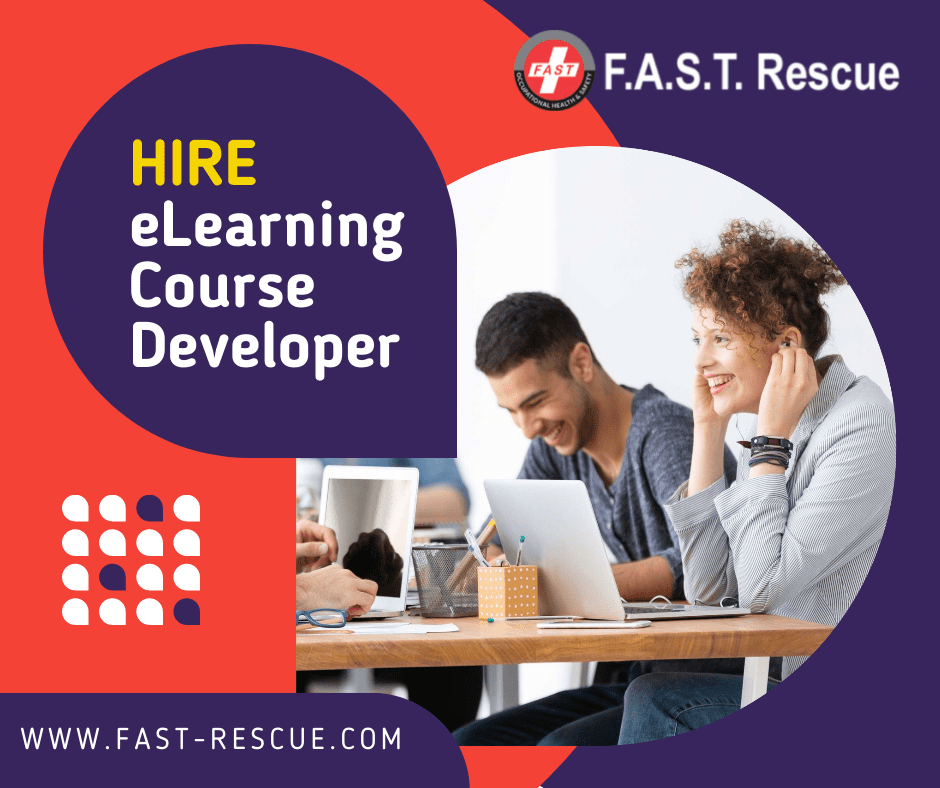
Welcome to our blog post on the best SCORM e-Learning authoring tools for course development. SCORM or Sharable Content Object Reference Model is a set of technical standards that ensures interoperability between learning management systems and learning content.
If you’re in the e-learning industry, you’re likely familiar with SCORM and its importance in creating eLearning solutions that can be easily shared and tracked. But with so many SCORM e-Learning authoring tools available, it can be difficult to determine which one is the best fit for your needs.
In this post, we will be highlighting some of the top SCORM e-Learning authoring tools currently available in the market.
We hope this information will help you make an informed decision when it comes to choosing the right tool for your course development needs.
What are SCORM e-Learning authoring tools?
SCORM e-Learning authoring tools are software programs that allow users to create interactive eLearning courses that are compliant with the SCORM standard. These tools typically provide a range of features and functionality that make it easy for users to create engaging and effective courses, including:
- Templates and pre-designed elements for creating courses quickly and efficiently
- Drag-and-drop functionality for arranging and organizing course content
- Tools for adding multimedia elements such as audio, video, and images
- Features for creating interactive elements such as quizzes, surveys, and games
- Functionality for tracking and analyzing learner progress and performance
- Options for customizing the look and feel of courses, including the ability to add branding and logos
There are many different SCORM e-Learning authoring tools available, each with its own unique set of features and capabilities. Some are geared towards beginners and offer an easy-to-use interface, while others are more advanced and offer a wider range of features for experienced course developers. Choosing the right SCORM authoring tool will depend on your specific needs and goals for course development.
Types of SCORM e-Learning authoring tools
There are several types of SCORM e-Learning authoring tools available, each with its own set of features and capabilities.
Here are some of the main types:
- Desktop authoring tools: These are software programs that are installed on a computer and allow users to create courses offline. Examples include Articulate 360 and Adobe Captivate.
- Cloud-based authoring tools: These are web-based tools that allow users to create courses online and store them in the cloud. Examples include Thinkific and Coursio.
- Open-source authoring tools: These are free, open-source tools that can be downloaded and used to create courses. Example: Adapt.
- Specialized authoring tools: These are tools that are designed for specific purposes, such as creating gamified courses or creating courses for virtual reality. Examples include Gameffective and LearnBrite.
How to choose the best SCORM e-Learning authoring tool
There are a few key factors to consider when choosing the best SCORM e-Learning authoring tool for your needs:
- Cost: The cost of SCORM e-Learning authoring tools can vary significantly, from free open-source options to expensive enterprise-level solutions. Determine your budget and look for a tool that offers the features you need at a price you can afford.
- Ease of use: Consider how user-friendly the tool is, especially if you are a beginner or don’t have a lot of experience with course development. Look for tools that offer templates and pre-designed layouts, as well as tutorials and other resources to help you get started.
- Features and capabilities: Make a list of the features and capabilities that are important to you, such as the ability to create quizzes, support for multimedia, and mobile compatibility. Look for a tool that offers the features you need.
- Compatibility: Ensure that the tool you choose is compatible with your learning management system (LMS) and any other systems you use.
- Customer support: Look for a tool that offers good customer support, including resources such as documentation, tutorials, and forums.
By considering these factors, you can narrow down your options and choose SCORM e-Learning authoring tools that meets your needs and budget.
Here are the best SCORM e-Learning authoring tools in 2023
1. Articulate 360
Articulate Storyline 360 is a comprehensive and user-friendly SCORM authoring tool that offers a range of powerful features for designing engaging eLearning courses. It integrates seamlessly with Content Library 360, allowing you to access a range of templates and high-quality assets to get started quickly.
The tool is suitable for both beginner and experienced L&D professionals, and it offers a responsive design system that automatically adapts your courses to different devices, including tablets and smartphones. This ensures that learners have an optimal viewing experience no matter what device they use.
Other notable features of Articulate Storyline 360 include the ability to create touchscreen gestures, collaborate with team members, personalize interactions, create software simulations and screencasts, and import videos of any type or format. Unlike Adobe Captivate, you don’t have to worry about adjusting your courses for different device breakpoints.
2. Adobe Captivate
Adobe Captivate is a comprehensive SCORM authoring tool that offers a range of features for creating interactive and mobile-ready eLearning courses. It includes a standalone slide-based content maker, a quiz builder, a video creator, and a content library. With Quick Start Projects and ready-to-go slides, you can create courses in minutes, and the tool’s out-of-the-box interaction features make it easy to create engaging content.
Some of the key features of Adobe Captivate include the ability to convert existing PowerPoint content to interactive videos, create mobile-ready courses, create screencasts by recording both webcam and on-screen content, create multi-module branched courses without programming, and create virtual reality walkthroughs. While Captivate is a feature-rich tool, it does come with a steep learning curve, so it may not be the best option for those looking to create simple employee training content.
3. iSpring Suite
iSpring Suite is a comprehensive toolkit for creating eLearning content that is based on PowerPoint. It is perfect for beginners who have no prior experience in eLearning authoring and want to create professional-quality courses quickly and easily.
With iSpring Suite, you can transform a PowerPoint presentation into an interactive, mobile-ready SCORM module with just a few clicks. The platform includes a range of dedicated tools for adding interactive elements to your courses, such as quizzes, videos, and simulations.
iSpring Suite is designed to be user-friendly and intuitive. You don’t need any programming skills or technical expertise to get started. Simply select your PowerPoint presentation, add interactive content using the tools provided, and publish your course. It’s that easy! Additionally, iSpring courses are designed to be responsive, meaning they automatically adapt to any screen size and aspect ratio, ensuring that learners have an optimal viewing experience no matter what device they use.
4. Elucidat
Elucidat is a powerful and user-friendly cloud-based authoring tool that enables large organizations to quickly and easily create effective online learning content. With a range of ready-made templates and intuitive design tools, you can easily produce mobile-friendly eLearning courses that engage and educate your learners.
Using Elucidat you can manage digital learning at scale. The tool includes team-level permissions, brand control, reusable assets, and localization tools that make it easy to create and maintain courses in multiple languages and across different regions. With Elucidat, you can also easily update multiple courses in just a few clicks, and you can use the multi-device slider to preview how your content will look on different screen sizes.
Additionally, Elucidat makes it easy to project duplication and sharing with your team, which helps to maximize reuse and production efficiencies. And with personalized pathways for learners, you can tailor your courses to meet the specific needs and goals of your audience.
5. Articulate Rise
Articulate Rise is a web-based authoring tool that is designed to make it easy to create mobile responsive content. The tool is lightweight and easy to use, with a range of features that allow you to generate storyboards and build out your learning quickly and efficiently.
With Articulate Rise, you can use pre-built interactions and drag-and-drop content blocks to create high-quality interactions without any technical expertise. This makes it a great option for beginners who are new to eLearning authoring or those who want to create professional-quality courses quickly and easily.
6. Composcia
Composica is a powerful and user-friendly SCORM authoring tool that makes it easy to collaborate with your colleagues and create professional-quality eLearning courses. With Composica, you can easily add different users, assign tasks, and ensure that you always have the most up-to-date version of your content.
Composica gives you full control over the design and behavior of your courses. You can style, modify, and position any object according to your content or brand guidelines, allowing you to create courses that are visually appealing and engaging. Additionally, Composica is relatively affordable, making it a good option for small or medium-sized businesses.
Overall, Composica is a versatile and user-friendly SCORM authoring tool that is ideal for creating professional-quality eLearning courses. Whether you’re working on a small team or a large organization, Composica has the tools and features you need to create engaging and effective courses that help your learners succeed.
7. dominKnow One
dominKnow One is a cloud-based SCORM authoring tool that is designed to help teams create and manage mobile responsive eLearning content more efficiently. With a range of features and tools, dominKnow One makes it easy to share, reuse, and collaborate on content, as well as manage assets centrally.
One of the key features of dominKnow One is its ability to translate and localize content, which is essential for creating courses that are accessible to learners around the world. The tool also includes a central library loaded with assets, such as templates, images, and videos, that you can use to create engaging and interactive courses. Additionally, dominKnow One provides built-in software simulation, allowing you to create realistic and immersive learning experiences.
dominKnow One also allows you to publish your courses in multiple formats, including SCORM, AICC, and xAPI, so you can easily distribute your content to learners. And with real-time collaboration capabilities, you can work with your team to create and revise courses in real-time streamlining the development process. Overall, dominKnow One is a powerful and user-friendly SCORM authoring tool that is ideal for teams looking to create mobile responsive eLearning content efficiently.
8. TechSmith Camtasia
TechSmith Camtasia is a powerful screen recording and video editing software that is ideal for creating eLearning courses. With a range of features and tools, you can easily create engaging and interactive courses that help your learners succeed.
One of the key features of TechSmith Camtasia is its screen recording capability. You can use it to record your computer screen, including audio and webcam video, to create video content for your courses. This is a great way to demonstrate concepts, walk learners through processes, or provide step-by-step instructions.
TechSmith Camtasia also includes a range of video editing tools, such as the ability to trim, cut, and split video clips, add captions and annotations, and apply effects and transitions. This makes it easy to create professional-quality video content that is both visually appealing and engaging. Additionally, TechSmith Camtasia supports the inclusion of multimedia elements, such as audio and video, to create interactive and immersive courses.
In addition to its video editing and multimedia support, TechSmith Camtasia also allows you to create quizzes, tests, and other assessments to assess learners’ progress and understanding. And with mobile compatibility, learners can access and complete courses on the go using their smartphones and tablets. Overall, TechSmith Camtasia is a versatile and user-friendly tool for creating engaging and effective eLearning courses.
9. Knowbly
Knowbly is a cloud-based SCORM authoring tool that offers a range of features and tools for creating professional-quality eLearning courses. With Knowbly, you can easily build courses with text, media, interactions, and quizzes using a simple drag-and-drop interface. The tool is ideal for eLearning beginners, as it is easy to use and customize, and it is also mobile-responsive, ensuring that learners have an optimal viewing experience no matter what device they use.
The key benefits of using Knowbly are its built-in review and real-time collaboration capabilities. This makes it easy to work with your team to create and revise courses in real time, streamlining the development process. Additionally, Knowbly is cloud-based, which means that you can access your courses from anywhere with an internet connection. This is especially useful for teams that work remotely or in different locations.
Another key feature of Knowbly is its centralized source, which makes it easy to manage localization, translations, and updates for your courses. This is especially useful for organizations that need to create courses in multiple languages or regions. Overall, Knowbly is a simple yet powerful SCORM authoring tool that offers all the features you need to create engaging and effective eLearning courses.
10. Evolve
Evolve is a powerful and user-friendly SCORM authoring tool that makes it easy to create professional-quality eLearning content quickly and efficiently. With a rich set of features, Evolve gives you total control over every aspect of course creation and presentation. You can make changes at scale with just a few clicks and choose whether to release your courses online or offline.
Evolve creates HTML5 eLearning content that is compatible with any platform or device, including desktops, tablets, and smartphones. This ensures that learners have an optimal viewing experience no matter what device they use. Additionally, as you build your courses with Evolve, you can see the changes you make in the Live Preview, which updates in real time as you work. This eliminates the need to refresh the page or wait for updates, making the course creation process faster and more efficient.
11. Lectora Online
Lectora is a powerful eLearning authoring tool that is suitable for creating SCORM content both in the cloud and on Windows-based, on-premise systems. One of the key features of Lectora is its mobile design approach, which gives you control over how your content displays across all devices. The content automatically adapts to the viewing device, but you can make adjustments as needed to ensure that learners have an optimal viewing experience.
Some of the core features of Lectora include intricate branching navigation, click-to-reveal interactions, knowledge checks, quizzes and assessments, and feedback popups. These tools allow you to create interactive and engaging courses that help learners retain knowledge and apply what they have learned. Additionally, Lectora includes animation, timeline, and event-based triggers, which you can use to synchronize audio, video, and user actions in a sequence of timed events.
Lectora also includes course starter templates in fresh designs, a built-in asset library, and a user-friendly screen recording and editing tool that you can use to personalize your courses with video. Additionally, the tool includes built-in variables and conditions that you can use to create custom learning paths that adapt based on learner behavior. Overall, Lectora is a versatile and user-friendly eLearning authoring tool that is suitable for creating professional-quality SCORM content.
12. Easygenerator
Easygenerator is a SCORM authoring tool that is designed to be easy to use for anyone, from eLearning professionals to subject-matter experts. With Easygenerator, you can create and share interactive content, track results, and collaborate with multiple authors in real-time. The tool’s “drag and drop” editor makes it easy to create interactive content without any technical expertise, making it a great option for beginners who are new to eLearning authoring.
The benefit of using Easygenerator is that you can easily integrate it with your intranet or other systems. You can also combine the tool with your LMS, LRS, LXP, or EPSS to support your knowledge management needs. This makes it easy to create and share eLearning content that is seamlessly integrated with your existing systems and processes. Overall, Easygenerator is a user-friendly and powerful SCORM authoring tool that is ideal for creating interactive and engaging eLearning courses.
13. Gomo
Gomo is a cloud-based authoring platform that is ideal for creating mobile-first eLearning content. The platform is designed to encourage collaborative working and allows you to quickly update and distribute your content. Gomo uses HTML5 and the latest web technologies to create courses that are tailored to your brand and work seamlessly on any device. With leading multi-language and localized content options, Gomo is perfectly suited for global networks of learners.
One of the key features of Gomo is its built-in templates, which can be edited and redesigned to suit your needs. However, it is worth noting that the editing and redesigning process can be a bit tricky, so it may not be the best fit for those who are new to eLearning authoring. Nonetheless, Gomo is a good fit for bite-size learning and is a powerful and user-friendly authoring platform for creating mobile-ready eLearning content.
14. Adapt Learning
Adapt Learning is a free and user-friendly eLearning SCORM authoring tool that makes it easy to create fully responsive, multi-device HTML5 eLearning content using the Adapt developer framework.
With Adapt Learning, you can easily create an account, log in, create courses, add interactive elements, and preview and publish your content. The process is straightforward and requires no technical expertise, making it a great option for beginners who are new to eLearning authoring.
15. H5P
H5P is a free, open-source, and community-driven system that allows you to create rich and interactive multimedia content for eLearning. It is used by thousands of universities, enterprises, school districts, governments, and other organizations to deliver interactive learning experiences.
The key feature of H5P is the wide range of learning units that it offers, many of which are not available in other LMS systems. You can also use H5P as microlearning units to create more targeted and focused learning experiences. By adding H5P modules to your training material, you can greatly enhance the content and create more engaging and interactive courses. Overall, H5P is a powerful and flexible system for creating multimedia content for eLearning.
To sum up
We hope that the information provided was helpful in your search for the right eLearning authoring tool. We wish you the best of luck in selecting a tool that is suitable for your needs and goals.



















